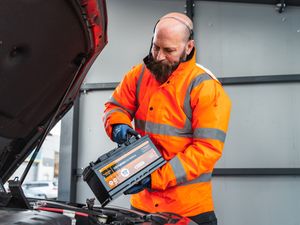JLR gives new use to old EV batteries as second-life energy storage
Development comes through a collaboration with UK firm Wykes Engineering.

JLR has teamed up with a leading UK-based renewable energy specialist to create a new energy storage system that uses old batteries from its Jaguar I-Pace electric vehicles.
Partnering with Rushden-based Wykes Engineering, JLR is planning to develop the ‘largest energy storage system’ in the UK that will be able to store solar and wind power. With 30 second-life Jaguar I-Pace batteries, the system will be able to store up to 2.5MWh of energy, whis is enough to power 250 homes for a day.
The batteries have been taken from prototype and engineering test vehicles and JLR aims to supply enough of them to eventually store a total of 7.5MWh of energy which could power 750 homes a day. The aim is to reach this goal by 2023.
Each system – thanks to an inverter – can manage the delivery and release of energy. For instance, it can send power directly to the National Grid during periods of high demand or draw it out within off-peak times and store it for later use.
François Dossa, executive director, strategy and sustainability at JLR, said: “Our sustainability approach addresses the entire value chain of our vehicles, including circularity of EV batteries.
Our EV batteries are engineered to the highest standards and this innovative project, in collaboration with Wykes Engineering, proves they can be safely reused for energy sector application to increase renewable energy opportunities. Using the 70-80% residual capacity in EV batteries, before being recycled, demonstrates full adoption of circularity principles.”
JLR believes that the second-life battery supply could exceed 200 gigawatt-hours per year by 2030. Batteries are sourced from vehicles once their health falls below the required standard for an EV.





